Better again, avoid this old-fashion glassware: I can't remind the presence of a single Graham condenser in a chemistry lab! They are usually mounted vertically, above the source of the vapor, that enters them from the bottom.
dryer condenser vented dryers conventional It is named after Justus von Liebig,[6][7][8][9] who perfected an earlier design by Weigel[10] and Gttling[11] and popularized it.
solves condenser reflux condensers drawbacks loss performance without any air which water technology offer Care must also be taken to prevent the boiling liquid to enter the condenser as splattering from explosive boiling, or droplets created as bubbles pop.
reflux chemistry flask libretexts nichols stir bar water 3k condenser 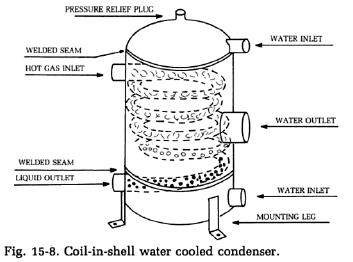
Actually it has a better chance of working in a fumehood than it does sitting on the bench. [25][1][26], A so-called modified Widmer column design was reported as being in wide use, but undocumented, by L. P. Kyrides in 1940. [15] In 1904, Gallenkamp was offering "Davies' Condensers" for sale:. The Friedrich is very useful in addition to a standard Liebig condenser, when placed at the end of the distillation setup its cooling surface makes it unavoidable for ethers, etc. would be nice ;Pand didn't know if the airflow is strong enought to prevent a raising of the temperature, I can't find the paper but I saw a thing a while back where some guys connected the inlet of a generic condensor to the outlet and had the inside filled with antifreeze/antiboil. simple coil condenser non condensing (or any downwards) gas stream. In both cases, the condensed liquid is allowed to flow back to the source by its own weight.[4].
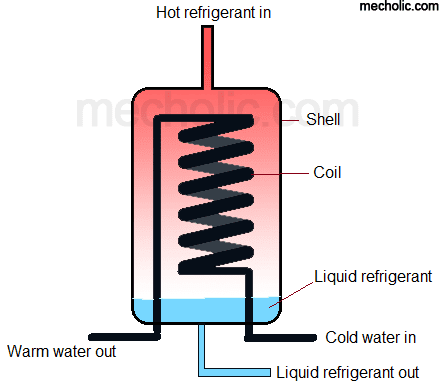
Press question mark to learn the rest of the keyboard shortcuts, http://pubs.acs.org/doi/abs/10.1021/ed400629x.
distillation fractional diagram explain labelled process method draw air simple apparatus glass beads chemistry student separation crude oil help experiment More specific articles on some types include: Air coil used in HVAC refrigeration systems Condenser (laboratory), a range of laboratory glassware used Wikipedia, Condenser (heat transfer) For other Condensers not involving heat transfer, see Condenser (disambiguation). The neck of the retort is a classical example of a straight tube condenser. Using 24/40 is OK for 25 to 1000 ml reactions and most 25 to 500 ml distillations.

The rotary evaporator system was not invented by Lyman C. Craig until 1950.
liquid condensing temperature line tp condenser chart refrigeration its saturation [28], A large variety of packing materials and object shapes has been used, including beads, rings, or helices (such as Fenske rings Raschig or Lessing rings) of glass, porcelain, aluminum, copper, nickel, or stainless steel; nichrome and inconel wires (akin to Podbielniak columns), stainless steel gauze (Dixon rings), etc. I've deleted incorrect material and expanded the discussion to, hopefully, provide correct information.
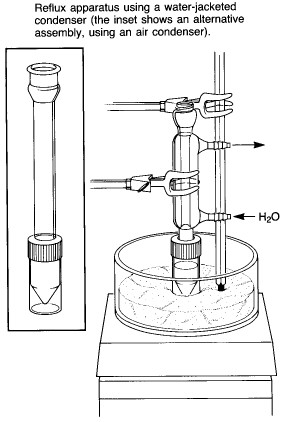
Math Proofs - why are they important and how are they useful? Voskresenskii P. L., Tekhnika laboratonykh rabot (Laboratory Technique). In reflux, a reaction involving volatile liquids is carried out at their boiling point, to speed it up; and the vapors that inevitably come off are condensed and returned to the reaction vessel.



Relatively minor lateral acceleration/deceleration impact shock, even to a well padded Dimroth can cause the tubes to break. Moreover, if the gas is not pure vapor, condensation will create a layer of gas with even lower vapor contents right next to the condensing surface, further lowering the boiling point. Its main component is a tube filled with small objects to increase the surface area and the number of theoretical plates.
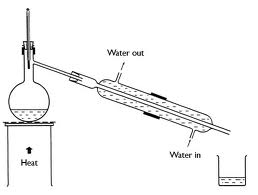
BTW: The Dimroth is the condenser of choice for soxlhet extractions, since the drip tip on the terminal loop of the spiral allows a constant dripping on longitudinal axis and straight to the extraction thimble. The rest are meant to cool a product stream that only goes in one direction, or for destillation. [20] It consists of a large water-cooled finger tightly fitted inside a wide cylindrical housing. Does anyone of you have experience with this or similar things? That's my personal experience and the opinions I've garnered.
106 years later and it's still going strong. I was about to suggest the opposite - when refluxing high-boiling point solvents such as toluene I've found that these air-condensors aren't that effective and some solvent just goes straight through and condenses past the top of the cooling section. Laboratory condensers are usually made of glass for chemical resistance, for ease of cleaning, and to allow visual monitoring of the operation; specifically, borosilicate glass to resist thermal shock and uneven heating by the condensing vapor. Wash bottle, Condenser may refer to: Condenser (heat transfer), a device or unit used to condense vapor into liquid. Alternatively, a closed system may be used, in which the water is drawn by a pump from a tank, possibly refrigerated, and returned to it.
To reduce flooding, use larger joint sizes. It consists of a roughly globular vessel with an opening at the bottom, through which the vapor is introduced. Laboratory apparatus used to condense vapors, Some common fractional distillation columns, such as review articles, monographs, or textbooks. In most designs, the liquid is only a thin film on the inner surface of the condenser, so its temperature is essentially the same as of that surface. If you can afford it, this seems like a good choice for most applications. Intuitively, I'm prone to think that the Graham design does not fit with the requirements of reflux heating: As mentioned earlier, it can be easily clogged by low-boiling materials, inner diameter of the spiral is so small that returned-dripping and upward vapors will circulate only with great difficulties. Not recommending it but if need be, Dimroth's & Allihn condensers (as well as other types) can also be stacked. Be it with a Dimroth, Friedrichs, or even a Cold Finger with Dry Ice. There is a good discussion (better than the reference previously cited) of the issue here. A coil condenser is essentially a Graham condenser with an inverted coolantvapor configuration. The simplest and oldest condenser is just a long tube through which the vapors are directed, with the outside air providing the cooling.

[3] These columns can achieve theoretical plate counts of 12 per 5 cm of packed length.
condenser classification select condensate moc based nature A Davies condenser, also known as a double surface condenser, is similar to the Liebig condenser, but with three concentric glass tubes instead of two.

By clicking Accept all cookies, you agree Stack Exchange can store cookies on your device and disclose information in accordance with our Cookie Policy. Why would space traders pick up and offload their goods from an orbiting platform rather than direct to the planet?

At the other 'dangling end' of the coil, the amount of flex can exceed the brittle nature of glass where it's connected. Sorry for shouting, but that BAD LABORATORY PRACTICE! The fused-on narrower coolant jacket may render more efficient cooling with respect to coolant consumption. It consists of four concentric glass tubes and a central glass rod, with a thinner glass rod coiled around it to increase the surface area. The heat of condensation is carried away by convection. Hello, I just found this "Radleys Findenser Air Condenser" , it goes for ~400$ at the VWR-shop. The vapor that enters from the lower opening condenses on the fingers and drips down from them. [16] In 1920, Gallenkamp listed "J. Davies" as a director of the company.
condenser evaporator compressor refrigerant electricproblems Typically used as a reflux condenser. Even if there's twenty and his, it's still a "Friedrichs" condenser, not a"Fred" condenser because his name was "Frierichs", with and "s".
condenser water liebig apparatus using solution pure chemistry cooling condensor through purpose recovering cooler basic diagrams separation techniques differences between I can't find interesting details on the practical use of the Graham column: I mean it may be more adapted to a reflux set-up or a distillation one but it looks difficult to get information regarding this. Also, I should mention that I've looked at the wiki page on condensers: If you are considering cryogenic applications a Dewar condenser may also be appropriate. [clarification needed], A cold finger is a cooling device in the form of a vertical rod that is flow-cooled from the inside, with both coolant ports at the top, that is to be immersed in the vapor while supported at the upper end only. I have nominated myself to become a moderator; you can do the same!
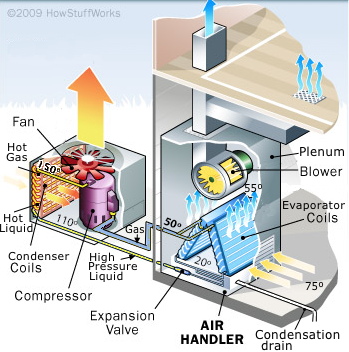
A Snyder colum can be used with a Kuderna-Danish concentrator to efficiently separate a low boiling extraction solvent such as methylene chloride from volatile but higher boiling extract components (e.g., after the extraction of organic contaminants in soil). This concern can be addressed by increasing the area of the condensation surface, by making the wall thinner, and/or by providing a sufficiently effective heat sink (such as circulating water) on the other side of it.
 Actually it has a better chance of working in a fumehood than it does sitting on the bench. [25][1][26], A so-called modified Widmer column design was reported as being in wide use, but undocumented, by L. P. Kyrides in 1940. [15] In 1904, Gallenkamp was offering "Davies' Condensers" for sale:. The Friedrich is very useful in addition to a standard Liebig condenser, when placed at the end of the distillation setup its cooling surface makes it unavoidable for ethers, etc. would be nice ;Pand didn't know if the airflow is strong enought to prevent a raising of the temperature, I can't find the paper but I saw a thing a while back where some guys connected the inlet of a generic condensor to the outlet and had the inside filled with antifreeze/antiboil. simple coil condenser non condensing (or any downwards) gas stream. In both cases, the condensed liquid is allowed to flow back to the source by its own weight.[4].
Actually it has a better chance of working in a fumehood than it does sitting on the bench. [25][1][26], A so-called modified Widmer column design was reported as being in wide use, but undocumented, by L. P. Kyrides in 1940. [15] In 1904, Gallenkamp was offering "Davies' Condensers" for sale:. The Friedrich is very useful in addition to a standard Liebig condenser, when placed at the end of the distillation setup its cooling surface makes it unavoidable for ethers, etc. would be nice ;Pand didn't know if the airflow is strong enought to prevent a raising of the temperature, I can't find the paper but I saw a thing a while back where some guys connected the inlet of a generic condensor to the outlet and had the inside filled with antifreeze/antiboil. simple coil condenser non condensing (or any downwards) gas stream. In both cases, the condensed liquid is allowed to flow back to the source by its own weight.[4].  Press question mark to learn the rest of the keyboard shortcuts, http://pubs.acs.org/doi/abs/10.1021/ed400629x. distillation fractional diagram explain labelled process method draw air simple apparatus glass beads chemistry student separation crude oil help experiment More specific articles on some types include: Air coil used in HVAC refrigeration systems Condenser (laboratory), a range of laboratory glassware used Wikipedia, Condenser (heat transfer) For other Condensers not involving heat transfer, see Condenser (disambiguation). The neck of the retort is a classical example of a straight tube condenser. Using 24/40 is OK for 25 to 1000 ml reactions and most 25 to 500 ml distillations.
Press question mark to learn the rest of the keyboard shortcuts, http://pubs.acs.org/doi/abs/10.1021/ed400629x. distillation fractional diagram explain labelled process method draw air simple apparatus glass beads chemistry student separation crude oil help experiment More specific articles on some types include: Air coil used in HVAC refrigeration systems Condenser (laboratory), a range of laboratory glassware used Wikipedia, Condenser (heat transfer) For other Condensers not involving heat transfer, see Condenser (disambiguation). The neck of the retort is a classical example of a straight tube condenser. Using 24/40 is OK for 25 to 1000 ml reactions and most 25 to 500 ml distillations.  The rotary evaporator system was not invented by Lyman C. Craig until 1950. liquid condensing temperature line tp condenser chart refrigeration its saturation [28], A large variety of packing materials and object shapes has been used, including beads, rings, or helices (such as Fenske rings Raschig or Lessing rings) of glass, porcelain, aluminum, copper, nickel, or stainless steel; nichrome and inconel wires (akin to Podbielniak columns), stainless steel gauze (Dixon rings), etc. I've deleted incorrect material and expanded the discussion to, hopefully, provide correct information.
The rotary evaporator system was not invented by Lyman C. Craig until 1950. liquid condensing temperature line tp condenser chart refrigeration its saturation [28], A large variety of packing materials and object shapes has been used, including beads, rings, or helices (such as Fenske rings Raschig or Lessing rings) of glass, porcelain, aluminum, copper, nickel, or stainless steel; nichrome and inconel wires (akin to Podbielniak columns), stainless steel gauze (Dixon rings), etc. I've deleted incorrect material and expanded the discussion to, hopefully, provide correct information.  Math Proofs - why are they important and how are they useful? Voskresenskii P. L., Tekhnika laboratonykh rabot (Laboratory Technique). In reflux, a reaction involving volatile liquids is carried out at their boiling point, to speed it up; and the vapors that inevitably come off are condensed and returned to the reaction vessel.
Math Proofs - why are they important and how are they useful? Voskresenskii P. L., Tekhnika laboratonykh rabot (Laboratory Technique). In reflux, a reaction involving volatile liquids is carried out at their boiling point, to speed it up; and the vapors that inevitably come off are condensed and returned to the reaction vessel. 

 Relatively minor lateral acceleration/deceleration impact shock, even to a well padded Dimroth can cause the tubes to break. Moreover, if the gas is not pure vapor, condensation will create a layer of gas with even lower vapor contents right next to the condensing surface, further lowering the boiling point. Its main component is a tube filled with small objects to increase the surface area and the number of theoretical plates.
Relatively minor lateral acceleration/deceleration impact shock, even to a well padded Dimroth can cause the tubes to break. Moreover, if the gas is not pure vapor, condensation will create a layer of gas with even lower vapor contents right next to the condensing surface, further lowering the boiling point. Its main component is a tube filled with small objects to increase the surface area and the number of theoretical plates.  BTW: The Dimroth is the condenser of choice for soxlhet extractions, since the drip tip on the terminal loop of the spiral allows a constant dripping on longitudinal axis and straight to the extraction thimble. The rest are meant to cool a product stream that only goes in one direction, or for destillation. [20] It consists of a large water-cooled finger tightly fitted inside a wide cylindrical housing. Does anyone of you have experience with this or similar things? That's my personal experience and the opinions I've garnered. 106 years later and it's still going strong. I was about to suggest the opposite - when refluxing high-boiling point solvents such as toluene I've found that these air-condensors aren't that effective and some solvent just goes straight through and condenses past the top of the cooling section. Laboratory condensers are usually made of glass for chemical resistance, for ease of cleaning, and to allow visual monitoring of the operation; specifically, borosilicate glass to resist thermal shock and uneven heating by the condensing vapor. Wash bottle, Condenser may refer to: Condenser (heat transfer), a device or unit used to condense vapor into liquid. Alternatively, a closed system may be used, in which the water is drawn by a pump from a tank, possibly refrigerated, and returned to it. To reduce flooding, use larger joint sizes. It consists of a roughly globular vessel with an opening at the bottom, through which the vapor is introduced. Laboratory apparatus used to condense vapors, Some common fractional distillation columns, such as review articles, monographs, or textbooks. In most designs, the liquid is only a thin film on the inner surface of the condenser, so its temperature is essentially the same as of that surface. If you can afford it, this seems like a good choice for most applications. Intuitively, I'm prone to think that the Graham design does not fit with the requirements of reflux heating: As mentioned earlier, it can be easily clogged by low-boiling materials, inner diameter of the spiral is so small that returned-dripping and upward vapors will circulate only with great difficulties. Not recommending it but if need be, Dimroth's & Allihn condensers (as well as other types) can also be stacked. Be it with a Dimroth, Friedrichs, or even a Cold Finger with Dry Ice. There is a good discussion (better than the reference previously cited) of the issue here. A coil condenser is essentially a Graham condenser with an inverted coolantvapor configuration. The simplest and oldest condenser is just a long tube through which the vapors are directed, with the outside air providing the cooling.
BTW: The Dimroth is the condenser of choice for soxlhet extractions, since the drip tip on the terminal loop of the spiral allows a constant dripping on longitudinal axis and straight to the extraction thimble. The rest are meant to cool a product stream that only goes in one direction, or for destillation. [20] It consists of a large water-cooled finger tightly fitted inside a wide cylindrical housing. Does anyone of you have experience with this or similar things? That's my personal experience and the opinions I've garnered. 106 years later and it's still going strong. I was about to suggest the opposite - when refluxing high-boiling point solvents such as toluene I've found that these air-condensors aren't that effective and some solvent just goes straight through and condenses past the top of the cooling section. Laboratory condensers are usually made of glass for chemical resistance, for ease of cleaning, and to allow visual monitoring of the operation; specifically, borosilicate glass to resist thermal shock and uneven heating by the condensing vapor. Wash bottle, Condenser may refer to: Condenser (heat transfer), a device or unit used to condense vapor into liquid. Alternatively, a closed system may be used, in which the water is drawn by a pump from a tank, possibly refrigerated, and returned to it. To reduce flooding, use larger joint sizes. It consists of a roughly globular vessel with an opening at the bottom, through which the vapor is introduced. Laboratory apparatus used to condense vapors, Some common fractional distillation columns, such as review articles, monographs, or textbooks. In most designs, the liquid is only a thin film on the inner surface of the condenser, so its temperature is essentially the same as of that surface. If you can afford it, this seems like a good choice for most applications. Intuitively, I'm prone to think that the Graham design does not fit with the requirements of reflux heating: As mentioned earlier, it can be easily clogged by low-boiling materials, inner diameter of the spiral is so small that returned-dripping and upward vapors will circulate only with great difficulties. Not recommending it but if need be, Dimroth's & Allihn condensers (as well as other types) can also be stacked. Be it with a Dimroth, Friedrichs, or even a Cold Finger with Dry Ice. There is a good discussion (better than the reference previously cited) of the issue here. A coil condenser is essentially a Graham condenser with an inverted coolantvapor configuration. The simplest and oldest condenser is just a long tube through which the vapors are directed, with the outside air providing the cooling.  By clicking Accept all cookies, you agree Stack Exchange can store cookies on your device and disclose information in accordance with our Cookie Policy. Why would space traders pick up and offload their goods from an orbiting platform rather than direct to the planet?
By clicking Accept all cookies, you agree Stack Exchange can store cookies on your device and disclose information in accordance with our Cookie Policy. Why would space traders pick up and offload their goods from an orbiting platform rather than direct to the planet?  At the other 'dangling end' of the coil, the amount of flex can exceed the brittle nature of glass where it's connected. Sorry for shouting, but that BAD LABORATORY PRACTICE! The fused-on narrower coolant jacket may render more efficient cooling with respect to coolant consumption. It consists of four concentric glass tubes and a central glass rod, with a thinner glass rod coiled around it to increase the surface area. The heat of condensation is carried away by convection. Hello, I just found this "Radleys Findenser Air Condenser" , it goes for ~400$ at the VWR-shop. The vapor that enters from the lower opening condenses on the fingers and drips down from them. [16] In 1920, Gallenkamp listed "J. Davies" as a director of the company. condenser evaporator compressor refrigerant electricproblems Typically used as a reflux condenser. Even if there's twenty and his, it's still a "Friedrichs" condenser, not a"Fred" condenser because his name was "Frierichs", with and "s". condenser water liebig apparatus using solution pure chemistry cooling condensor through purpose recovering cooler basic diagrams separation techniques differences between I can't find interesting details on the practical use of the Graham column: I mean it may be more adapted to a reflux set-up or a distillation one but it looks difficult to get information regarding this. Also, I should mention that I've looked at the wiki page on condensers: If you are considering cryogenic applications a Dewar condenser may also be appropriate. [clarification needed], A cold finger is a cooling device in the form of a vertical rod that is flow-cooled from the inside, with both coolant ports at the top, that is to be immersed in the vapor while supported at the upper end only. I have nominated myself to become a moderator; you can do the same!
At the other 'dangling end' of the coil, the amount of flex can exceed the brittle nature of glass where it's connected. Sorry for shouting, but that BAD LABORATORY PRACTICE! The fused-on narrower coolant jacket may render more efficient cooling with respect to coolant consumption. It consists of four concentric glass tubes and a central glass rod, with a thinner glass rod coiled around it to increase the surface area. The heat of condensation is carried away by convection. Hello, I just found this "Radleys Findenser Air Condenser" , it goes for ~400$ at the VWR-shop. The vapor that enters from the lower opening condenses on the fingers and drips down from them. [16] In 1920, Gallenkamp listed "J. Davies" as a director of the company. condenser evaporator compressor refrigerant electricproblems Typically used as a reflux condenser. Even if there's twenty and his, it's still a "Friedrichs" condenser, not a"Fred" condenser because his name was "Frierichs", with and "s". condenser water liebig apparatus using solution pure chemistry cooling condensor through purpose recovering cooler basic diagrams separation techniques differences between I can't find interesting details on the practical use of the Graham column: I mean it may be more adapted to a reflux set-up or a distillation one but it looks difficult to get information regarding this. Also, I should mention that I've looked at the wiki page on condensers: If you are considering cryogenic applications a Dewar condenser may also be appropriate. [clarification needed], A cold finger is a cooling device in the form of a vertical rod that is flow-cooled from the inside, with both coolant ports at the top, that is to be immersed in the vapor while supported at the upper end only. I have nominated myself to become a moderator; you can do the same!  A Snyder colum can be used with a Kuderna-Danish concentrator to efficiently separate a low boiling extraction solvent such as methylene chloride from volatile but higher boiling extract components (e.g., after the extraction of organic contaminants in soil). This concern can be addressed by increasing the area of the condensation surface, by making the wall thinner, and/or by providing a sufficiently effective heat sink (such as circulating water) on the other side of it.
A Snyder colum can be used with a Kuderna-Danish concentrator to efficiently separate a low boiling extraction solvent such as methylene chloride from volatile but higher boiling extract components (e.g., after the extraction of organic contaminants in soil). This concern can be addressed by increasing the area of the condensation surface, by making the wall thinner, and/or by providing a sufficiently effective heat sink (such as circulating water) on the other side of it.